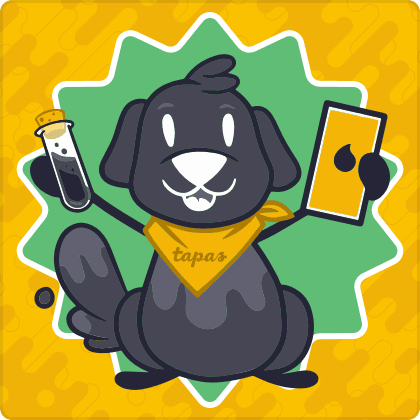The great outer walls of Selkir City remained an impressive sight the second time we were approaching them. OK, the second time outside the game. The game hadn’t covered much of the history. And neither had Lars. It was an old city before the events of the game. Although the outer wall had been new. An expansion project the aging king had started in his youth, the outer wall was almost finished in the game world. At one point in the main quest, there was an event in which monsters attacked through the last part of the wall that was still being completed and the players had to take part in saving the city. I have no idea whether something like that event happened in the real Selkir City.
According to Una, this whole kingdom was originally built during a war to reclaim territory from monsters. That explains a lot of the heavily fortified older sections shown in the game. And the neighboring lake, the ongoing dangers, and population growth explain the newer ones. The large walls of the town form a series of off-center concentric circles with the old castle in the center of the innermost. Calling it “circles” is a rough approximation, the overall effect of many sections of straight wall joined at angles. The innermost wall is actually a heptagon. Because that original wall left limited space between it and the lake, each successive layer of larger wall created a new center of the city getting progressively further from the lake.
The old castle was long since converted into the kingdom’s main Temple of Tornung and the rest of the original space called the First Ring was a park. I’m just guessing, but it probably originally contained buildings other than just the castle. The Second Ring held seven temple buildings and many of the homes of the city’s wealthy as well as a few shops largely catering to the upper class. Of those seven temple buildings, six were the kingdom’s main temples for Satvar, Ilki, Vulcane, Hecate, Vyapar, and Shush. The other one had been the main Temple of Tornung before that one moved into the old castle. Afterwards, it was converted into a common auxiliary building shared by all the temples. A larger, less old castle sat in the center of the Third Ring surrounded by various military and administrative buildings interspersed with housing and workshops of various kinds. The Fourth through Sixth Rings contained a variety of houses, warehouses, storehouses, and small farmettes that might have enough space for a chicken coop or a small garden. At least in the game, the Sixth also contained the guild halls from the adventurers to the woodworkers. Although since it sounds like adventurer guilds aren’t a thing in this world, I’ve no idea what is actually in those spots. A new bustling market sits at the center of the seventh ring. There’s also a reservoir. And there are significant garrisons at the gates. Farmland accounts for most of the rest of the Seventh. There’s also a significant fort with a tall watchtower not far outside the gate to which we returned. Maybe that’s just to watch over the farms outside. Or perhaps it is part of preparations to add an Eighth Ring.
In any case, with Midnight squared away at the wolf ranch, we were let in through the gates with no problem. One of the guards did look at George on my shoulder and say, “That’s different.” By contrast, Felix drew no particular notice. Quite to the contrary, someone else happened to come out through the gate with a hawk on his arm while we were going in. It was the first I’ve seen anyone else with a predatory pet; but apparently falconry isn’t unfamiliar here, if perhaps a bit rare. Aside from that offhand comment about George, there wasn’ t much scrutiny. Just routine questions about where we were coming from and the purpose of our visit. Apparently looking for old friends and seeking to learn spells are considered ordinary reasons. The guards asked if we needed directions to the mages guild. And then with basic directions given, they pointed out the direction to the new market and passed us through into the city.
At the market, we started looking around for potential Dark Wolf carcass buyers. After asking around with various merchants, we found no buyers. Several speculated that the mages guild itself might be interested. Along the way, we casually browsed myriad carts and a few semi-permanent sales stands.
A few of the carts sold made-to-order hot food. Most of these had charcoal grills, which explained the smoke we’d seen over the market area as we approached. A few of the nicer carts with long lines of customers had magical griddles inscribed with runes glowing red. Simon and I got something in between a pancake and crepe served with a honey-sweetened whipped cream from one of those. They called it Selkir Creamed Flatbread and it was worth the wait in line.
There were two established shops with fully permanent buildings in the market. One of them was staffed by priests of Vyapar who both sold tickets to athletic and martial games and ran betting on those games. The other was a weapon and armor shop which displayed gear organized not by type or function but rather by maker, with each display centered around a logo with a paper underneath either listing the name of a craftsman or of a workshop who had made the logo and the products. This was apparently a high end shop, as all of it was well outside of prices Simon or I could consider.
The only items we came across in the whole market that cost more than the arms and armor in that shop were matching bow and arrow sets sold by an elven man from an otherwise nondescript cart who introduced himself as Aolon. The first elf I’d met so far, Aolon looked just as expected from the game: tall, pale, and wiry slim, with pointed ears sticking out slightly from his long, silky, black hair, wearing a knee-length green tunic over tan hosen that were far less dirty than the clothes of most everyone else around including us. He seemed to genuinely enjoy showing us the bows. Even after we’d inquired about pricing and admitted that we had far too little money, he still encouraged us to test draw several of the bows and spent a while telling us about the materials and the two families of bowmakers whose work he’d brought from Afa, his forested home far to the southwest of the Kingdom of Selkir. They sure seemed like really, really nice bows to me. And in the game elven bows were easily the best. I’d love to get one of them. But one probably has to be an upper noble to afford that much gold. Carrying one of these bows is probably a serious status symbol around here.
We ended up spending far longer at the market than we’d planned, running out of daylight. So we headed for the nearest inn after that, which brought us just inside the Sixth Ring. The inn happened to be one reflected in the game, called the Red Antler. The rooms were tiny and mine had no window or really anything else other than a bed and a chamber pot; but they were reasonably clean.
The first morning in Selkir City, we stepped out of the Red Antler and were almost knocked over by porters guiding a donkey cart full of wooden boxes through the bustling street. In terms of density, it wasn’t anything like a New York City movie’s close-packed pedestrian scene of course; but still there were quite a few people carrying goods here and there, a guard troop in transit, and a noble walking with an entourage of attendants all visible at a glance when we came out. There were a lot more people than the game ever depicted on a street. Maybe they chose to show fewer people to reduce game computer power needs or just to simplify design. Anyway …
We looked at each other and had the same thought.
Simon: “We’re really about to visit a mages guild, aren’t we?”
Maeve: “Yeah. How cool is that?”
Simon: “Very.”
When you’ve read books and played games where the mages guild forms such a cornerstone of life in a fantasy world, just having been in that world fighting monsters and casting spells for a month or even for years doesn’t dim the excitement. We were on our way to visit our first actual mages guild. In person.











Comments (0)
See all